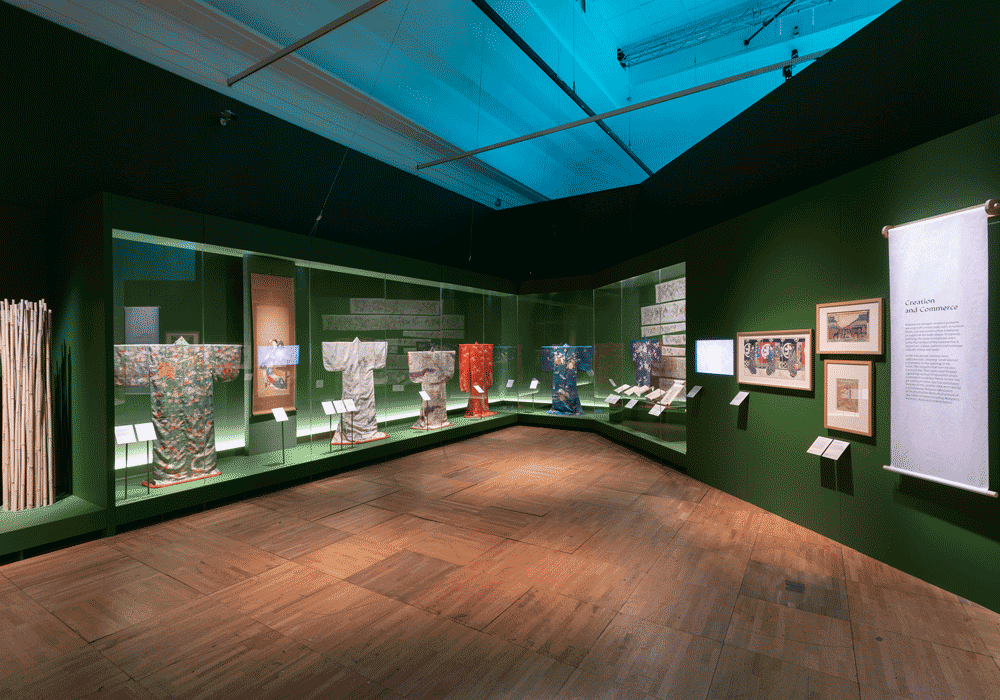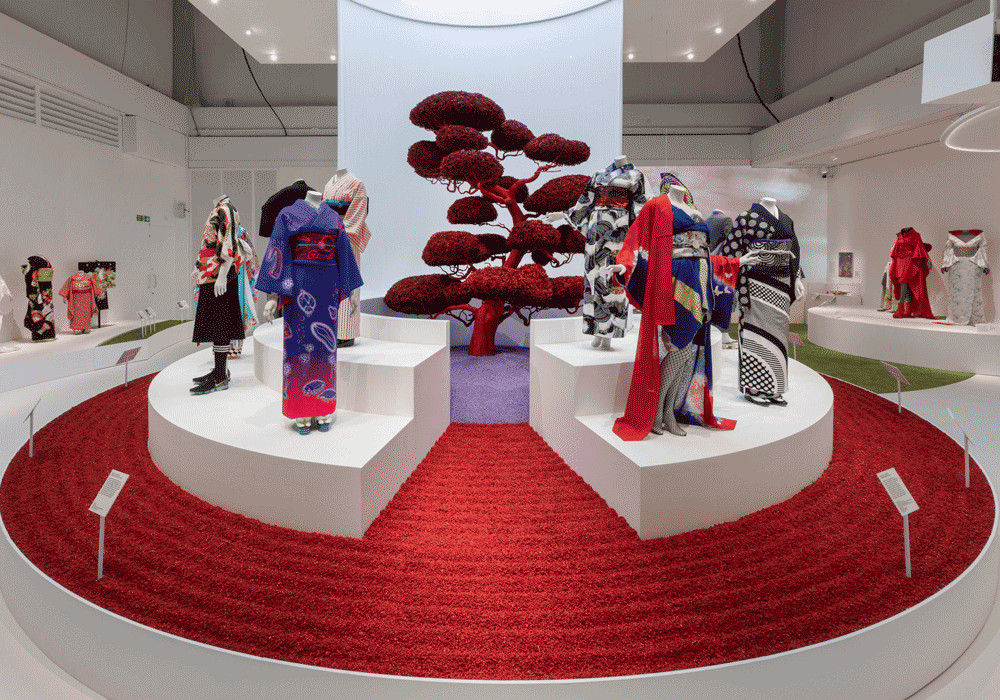‘Kimono: Kyoto to Catwalk’, Victoria and Albert Museum, London, until 21 June 2020
The ultimate symbol of Japan, the kimono is often perceived as traditional, timeless and unchanging. ‘Kimono: Kyoto to Catwalk’ on show at the Victoria and Albert Museum in London until 21 June 2020, counters this conception, presenting the garment as dynamic and constantly evolving. Rare kimono are displayed for the first time in the UK, including examples from Joshibi University of Art and Design Art Museum and The Khalili Collection.
The following is abridged from curator Anna Jackson’s introduction at the press view:
‘Kimono simply means ‘the thing to wear’ and the garment’s history stretches back over a thousand years. In 17th-century Japan, it became the principle garment worn by everybody, regardless of their social status, wealth or gender. The distinctive characteristic of kimono is that they are straight seamed garments, simply wrapped round the body and tied at the waist with a sash. In opposition from how we dress in the west, where we tend to emphasise rather than suppress the image of our body shape, in Japanese clothing, it’s the surface of the garment that is important. Your choice of colour or pattern or decorative techniques is what tells people about who you are, how wealthy you are, your social status and—most of all—how fashionable you are. The first section of the exhibition focuses on the mid-17th to mid-19th century, a period of unprecedented peace, prosperity and urban expansion. Kyoto was the centre of luxury manufacture and a new spirit of style and sophistication was born. But the focus soon shifted to Edo, modern day Tokyo, where by the 18th century there was a vibrant culture of entertainment, glamour and eroticism, known as ‘The Floating World’. A really lively fashion culture thrived in Japan and the increasingly affluent middle classes sought out the latest styles to express their confidence and taste. Actors and courtesans were the trend-setters of the day and wood-block prints of these celebrities and other stylish presences were produced in there thousands and sold immediately, allowing for fashion information and inspiration to be spread around the world.

The second section of the exhibition looks at the global importance of kimono. From the mid-17th through to the 19th century, Japan was part of a global network of cultural exchange. The Dutch East India company brought modern fabrics to Japan that were incorporated into kimono and they took the kimono back to Europe. Realising their popularity, they commissioned versions with slightly adapted sleeves and thicker wadding than the Japanese versions. But the Japanese couldn’t meet the enormous demands, so the Dutch had similar garments made in India and elsewhere in Europe. In the 19th century, Japan became more open to the world and the textile industry, which was rapidly modernising, made fashionable kimono available to more people than ever before. At the same time trade expanded dramatically, from New York to New Zealand, a kimono craze developed. The Japanese responded by making garments specifically for foreigners, called ‘kimono for foreigners’, and in the early 20th century the kimono had an enormous influence on European fashion as designers abandoned tightly corseted, highly-structured garments in favour of less tailored layers of fabric.

The final section of the exhibition looks at the kimono fashion since the 1940s. In the aftermath of the Second World War, the wearing of kimono in Japan dramatically declined, the garment came to embody tradition and etiquette, rather than fashion and style, and became a symbol of national cultural identity. For many, the garment was simply a form of ceremonial costume, while for others it was an important focus for the preservation of Japanese textile techniques and skills. The potential of the garment to be deconstructed and reformed, translated and transformed makes it a uniquely versatile form with fashion designers across the world, including in Japan itself. However, the future for the Kimono itself was looking quite bleak until relatively recently. Now Japan is witnessing a kimono renaissance, the kimono’s recent reinvention on the streets of Japan is explored through work by an exciting new wave of contemporary designers, who approach the creation of kimono in fresh and sometimes even subversive ways.’
Travel to the source of these influential and intricately woven garments on a specialist textile journey in Japan, with HALI Tour in partnership with Martin Randall Travel, 1-12 November 2020. Email halitours@hali.com to receive further information.



























Comments [0] Sign in to comment